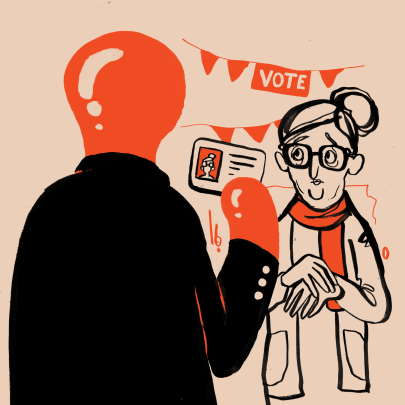May 8, 2023 City Life
It was when I found myself hair-drying a window that I realised my obsession with cutting my electricity bill had gone too far. It was past bedtime, and I’d spent the last four hours attaching plastic to the glass around my home, growing exponentially more frustrated as the night wore on. Cutting the giant sheets of translucent cellophane to size was the easy part; carefully attaching the double-sided tape to the arched windows in the lounge was harder; creating a perfect wrinkle-free finish with my GHD on full blast was an impossible nightmare.
Window insulation kits are sold as a cheap alternative to double glazing, a secondary layer of protection from the cold air and condensation of winter, all for the price of a decent woolly hat. And don’t get me wrong — they definitely help keep the warmth in, and while panels of glorified Glad Wrap aren’t going to feature in design magazines anytime soon, they don’t look as grim as the even-cheaper DIY option: industrial quantities of bubble wrap stuck directly to the glass.
But I can’t pretend this is what I’d imagined being a middle-aged, middle-income first-time homeowner would be like. It all felt so undignified. As I balled up another strip of misaligned sticky tape and threw it towards the bin, I wondered yet again: is this what Aotearoa’s shivering masses have been reduced to, just to live in homes that don’t make them cold and sick?
While our historical, all-but-non-existent insulation standards are clearly the underlying problem here, the more pressing issue is one that has been preoccupying me ever since I signed the mortgage contract 18 months ago. Sizeable electricity bills are, like car insurance and the price of eggs, an unfortunate fact of life; the difference is that you have some control over what you pay for power.
And so, faced with a seemingly endless litany of costs that I’d never even considered as a renter — who knew that properly mulching a garden could cost a couple hundred dollars? — I embarked on a mission to cut my power bills to the bone.
Of course, I had a headstart in many ways. Electricity can be ruinously expensive in New Zealand, but we have nothing on northern Europe, in particular the United Kingdom, where sanctions on Russian-supplied natural gas have led to an 80% jump in energy costs since the start of the Russia–Ukraine war. In January, the UK’s typical annual household energy bill was estimated at a terrifying £4,279, or around NZ$700 a month.
Even in this country the impact of electricity prices is unequally felt. Renters, as a rule, have it toughest: a 2020 survey found that 32% of them could see their breath indoors during the depths of winter, compared to 18% of homeowners. As always, those already struggling economically have it worst it all. In a study of children admitted to Wellington Hospital, 52% lived in homes that were colder than their parents would like, and 14% in households that struggled to pay their power bills on time.
My 1970s townhouse may be draughty and single-glazed, but it’ll never send me to the hospital or into penury. I’m lucky, I know. Still, I continue to watch my power usage app like a hawk, obsessively checking to see how that oven-roasted chicken (I should really buy an airfryer) or sunless winter day (why oh why did I choose to work from home?) impacts my daily stats.
My energy-saving attempts started small, with a cheap slow cooker from Briscoes. It was the best $60 I spent all year. Eighteen months on, I can still cook only three things in it, but who cares? Also: did you know that chicken thighs, a jar of salsa and some taco seasoning mix is all it takes to make one of the most delicious stews you’ve ever tasted?
Back to check the app: not turning on the oven had saved me a few cents, but I wanted more, much more. It was time to take a scythe to my hot water use. I already did laundry on the cold setting, and turned the dishwasher on after 10pm, so it was showering that had to go. No, not like that — my hygiene is still exemplary (though, come to think of it, I do live and work alone, so can I really be sure?). Instead, I found myself showering a lot more at the gym.
All these changes gave me some quiet satisfaction, but nothing induced actual pleasure like my heated throw. Sort of like an electric blanket for your couch, not your bed, the heated throw is a portable, wrappable, warm hug of a device. Many was the chilly night last year that I actually turned off the heating and snuggled into my ugly grey throw, a money-conscious bug in an electric-powered rug.
When spring came, I took down the plastic window insulation, the sticky tape lifting long strips of paint from the window frames in the process. I’d already thrown out the rest of the kit. This year, I’ve come up with a new way to cut my household power bill: I’m packing up my stuff, renting out my house, and spending winter in the Mediterranean.
–






